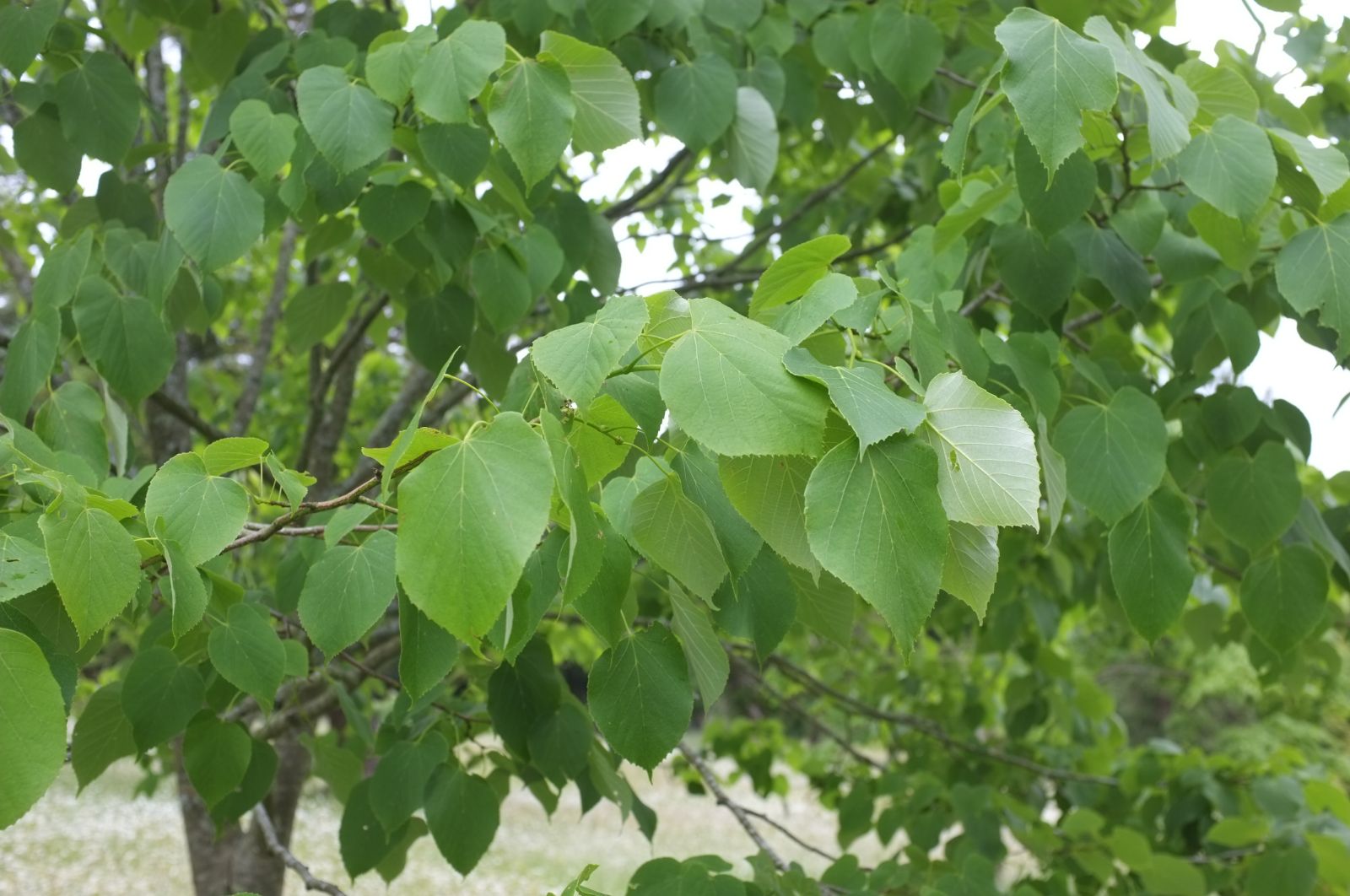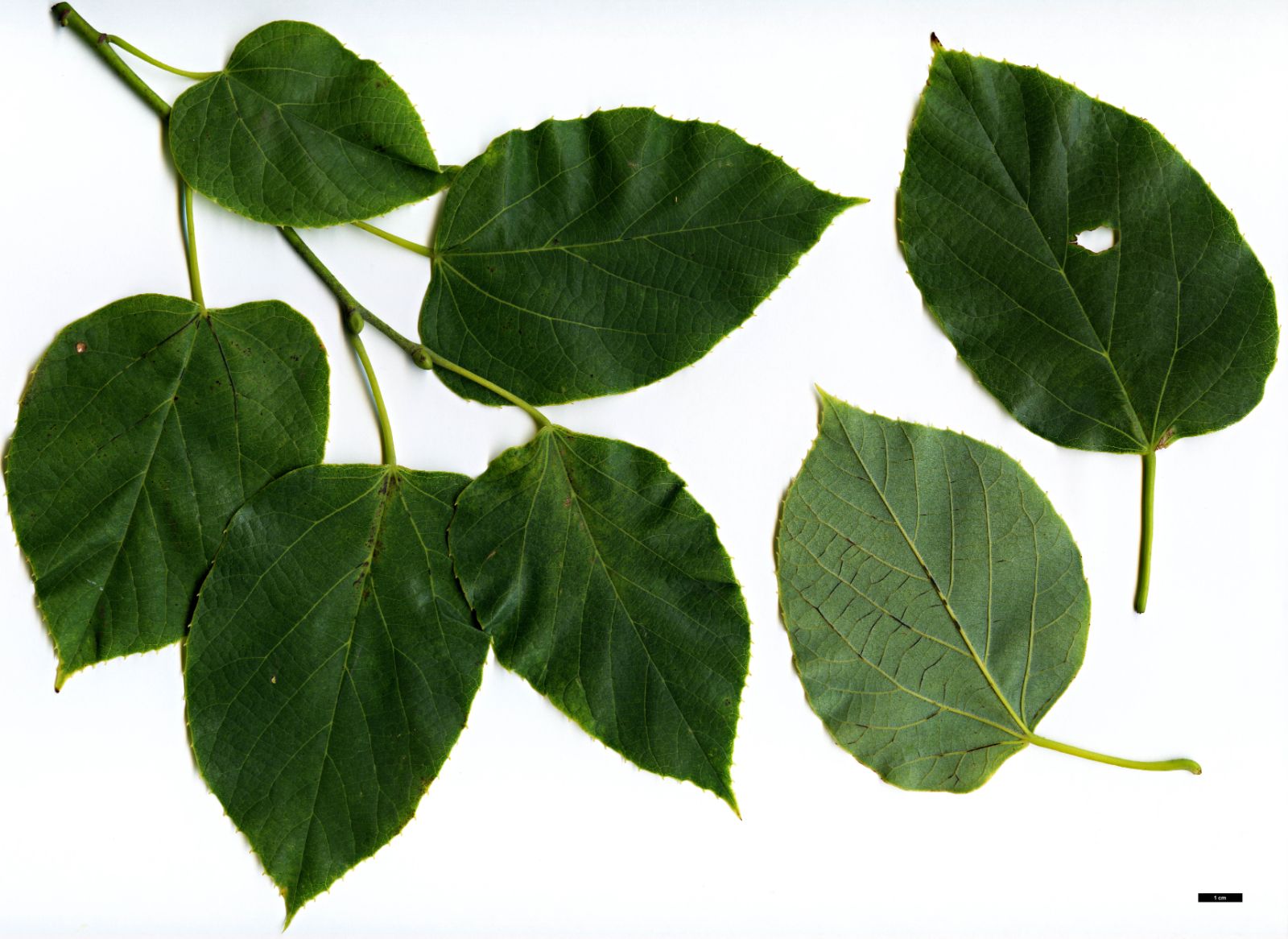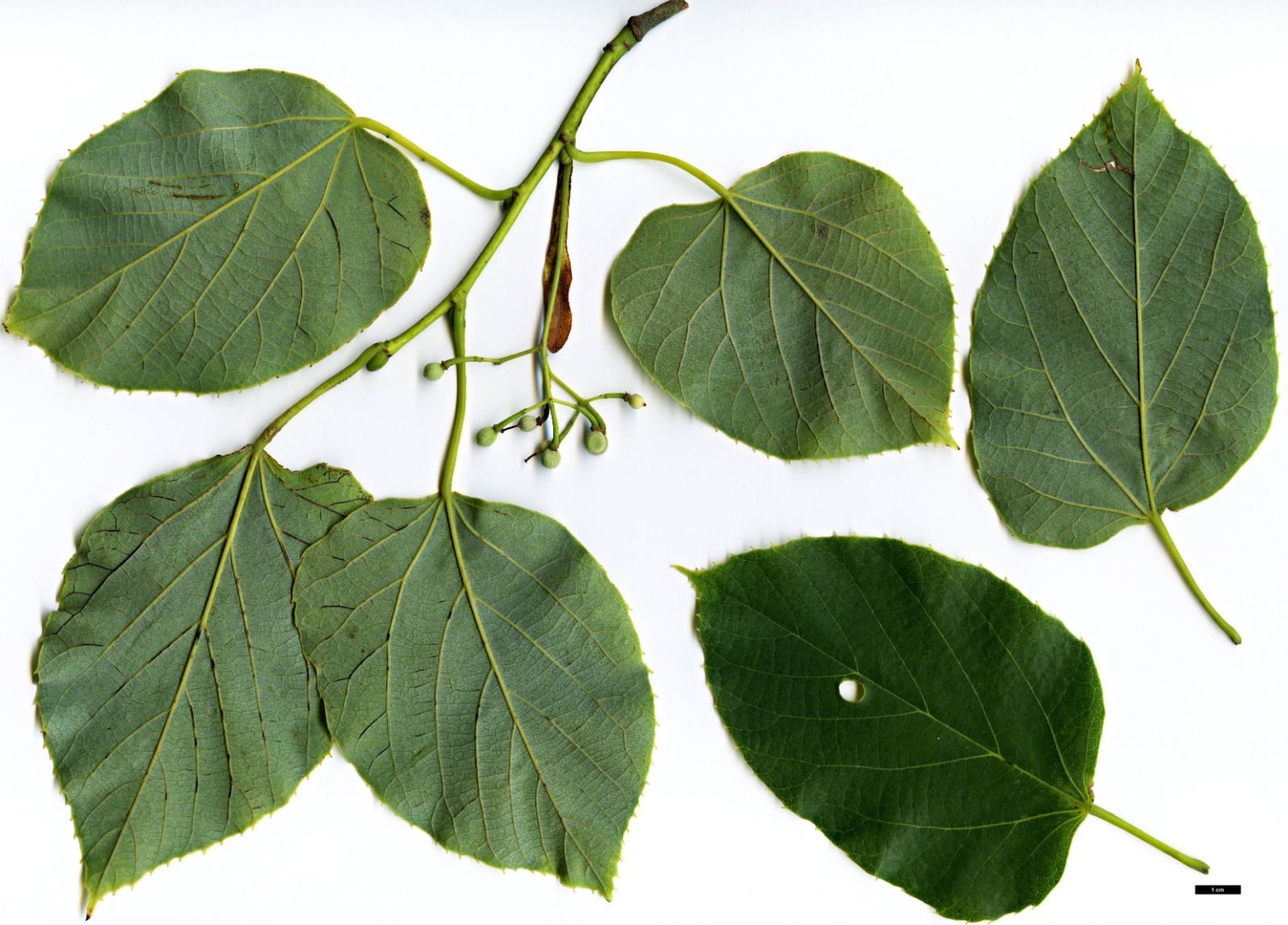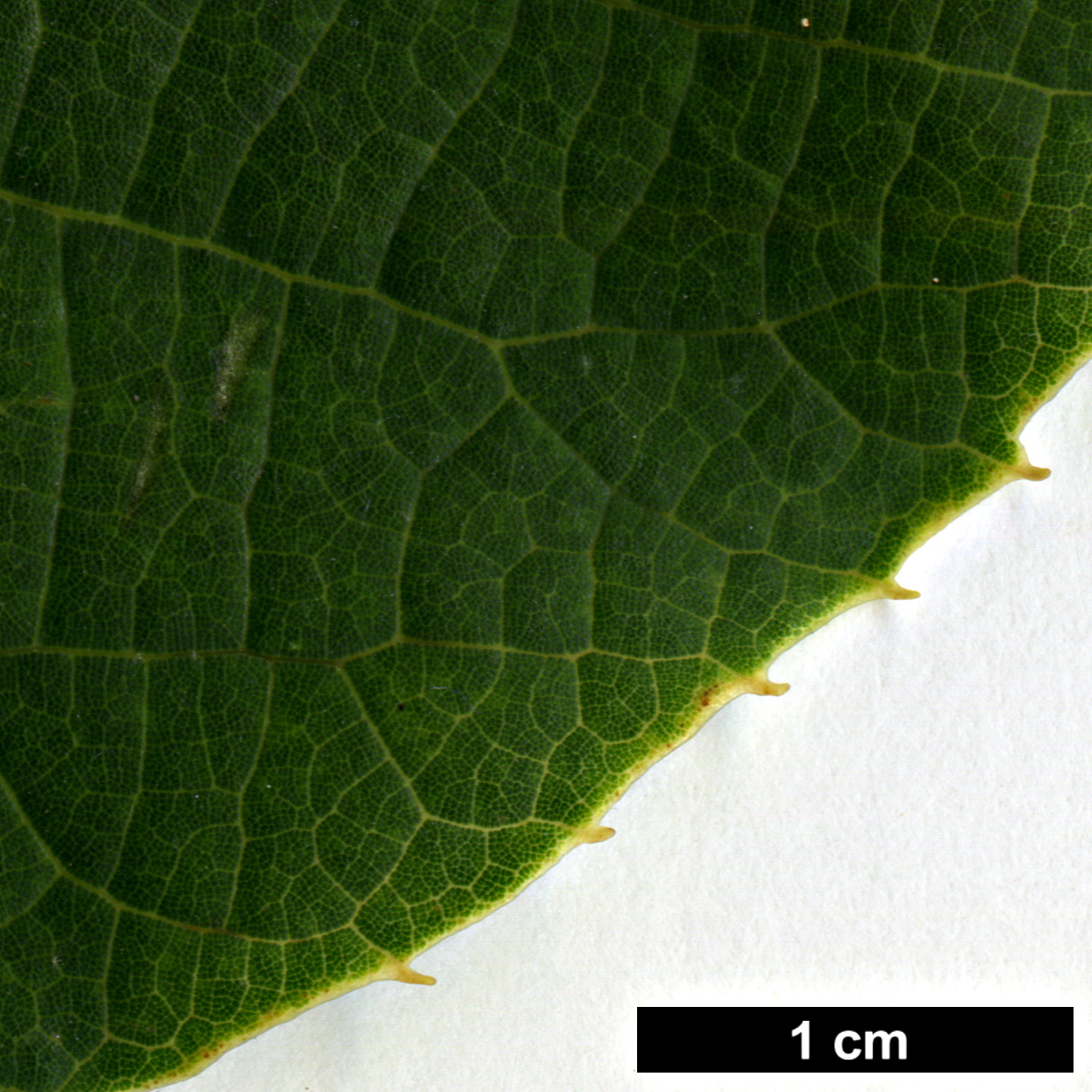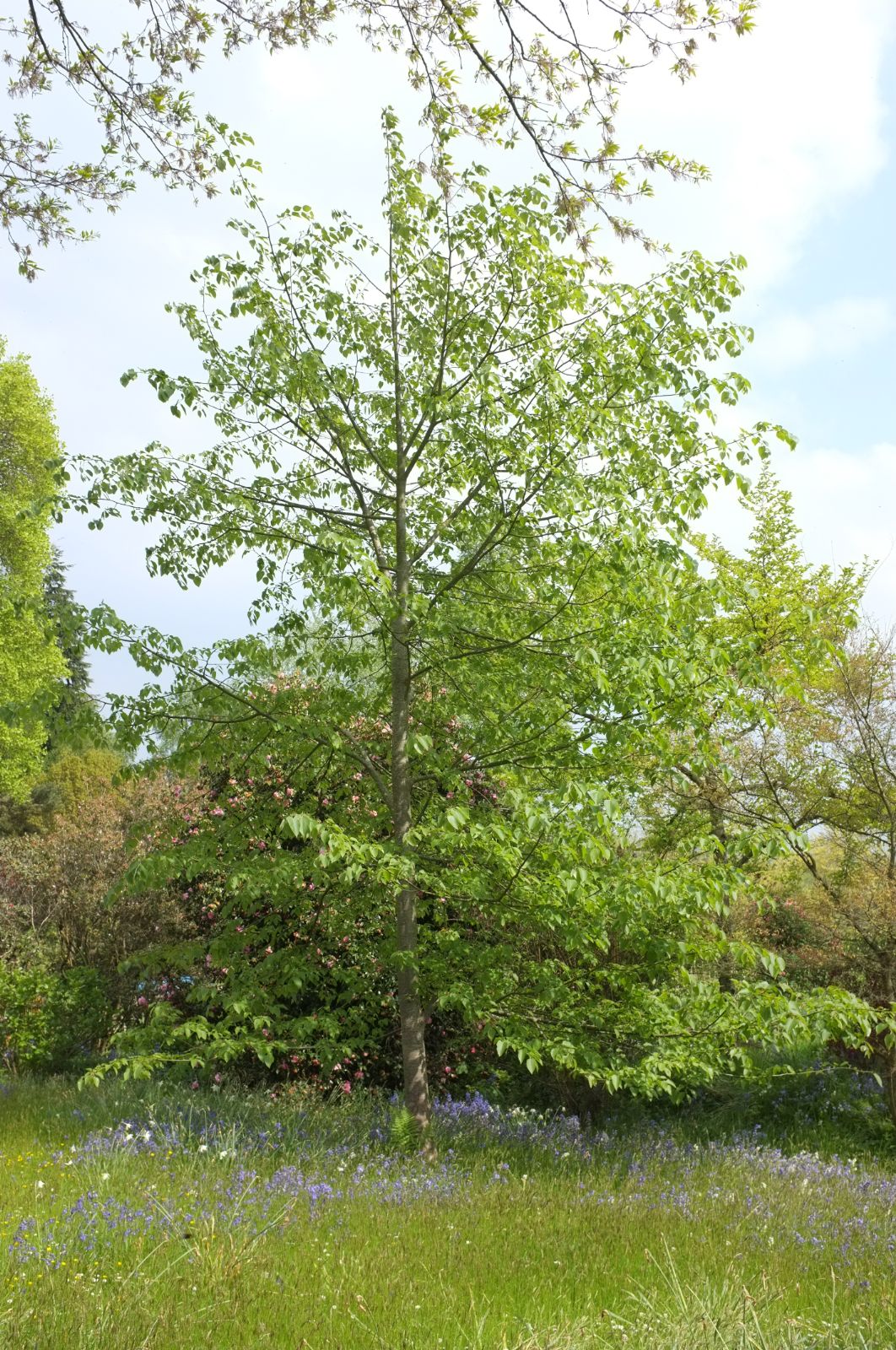Tilia tuan
Sponsor
Kindly sponsored by
a member of the International Dendrology Society
Credits
Owen Johnson & Julian Sutton (2020)
Recommended citation
Johnson, O. & Sutton, J. (2020), 'Tilia tuan' from the website Trees and Shrubs Online (treesandshrubsonline.
Genus
Synonyms
- Tilia obscura Hand.-Mazz.
- Tilia oblongifolia Rehd.
- Tilia mofungensis Chun & Wong
- Tilia chenmoui Cheng
- Tilia mesembrinos Merrill
- Tilia omeiensis Fang
- Tilia kweichouensis Hu
- Tilia likiangensis Chang
- Tilia nanchuanensis Chang
- Tilia hupehensis Chang
- Tilia tristis Chun ex Chang
- Tilia austro-yunnanica Chang
- Tilia angustibracteata Chang
- Tilia gracilis Chang
Other taxa in genus
- Tilia americana
- Tilia amurensis
- Tilia callidonta
- Tilia chinensis
- Tilia chingiana
- Tilia concinna
- Tilia cordata
- Tilia dasystyla
- Tilia endochrysea
- Tilia × euchlora
- Tilia × europaea
- Tilia × flaccida
- Tilia × flavescens
- Tilia Hanwell Hybrids
- Tilia 'Harold Hillier'
- Tilia 'Harvest Gold'
- Tilia × haynaldiana
- Tilia henryana
- Tilia japonica
- Tilia × juranyana
- Tilia kiusiana
- Tilia mandshurica
- Tilia maximowicziana
- Tilia miqueliana
- Tilia mongolica
- Tilia nobilis
- Tilia × noziricola
- Tilia oliveri
- Tilia paucicostata
- Tilia platyphyllos
- Tilia tomentosa
- Tilia 'Westonbirt Dainty'
Tree to 23 m tall. Bark pale brownish-grey, developing close vertical ridges in maturity. Twigs slender (1.4–2.5 mm thick), green, usually glabrous. Buds 6–7 mm long, with 3 scales visible, the lowest swollen and over half the length of the bud; usually green and shining. Leaves 8–13 × 5–9 cm, broadly to narrowly ovate, very oblique at the base and often with a bulge in the lobe on the big side; margins entire, or with distant rod-like teeth, or very shallowly serrate; upper surface dark green and often notably matt, lower surface green to white with a variable stellate tomentum (most hairs with 8 arms). Floral bracts usually large (9–16 × 1.4–2.5 cm), pale green, with variably dense white stellate tomentum on the lower side. Inflorescence drooping, usually branched 3 times with 10–15 flowers in a tight cyme; flowers small (6–9 mm across), beaker-shaped. Staminodes present. Fruits c. 10 mm, spheroid, unribbed, uniformly mamillate, covered in a dense, pale brown stellate tomentum; wall 0.8–1.3 mm thick, woody and hard to break (Tang et al. 2007; Pigott 2012).
Distribution China Guangxi, Guizhou, Hubei, Hunan, Jiangsu, Jiangxi, Sichuan, Yunnan, Zhejiang Vietnam North
Habitat Mountain forests
USDA Hardiness Zone 6b-9
RHS Hardiness Rating H5
Conservation status Least concern (LC)
This is the most widespread Chinese lime. The Polish botanist Ignaz von Szyszylowicz described Tilia tuan in 1890, from specimens collected in Sichuan by Augustine Henry. The specific epithet refers to the Chinese name for the lime tree, a character rendered duàn in Pinyin, and tuan using the older Wade-Giles system (Chinese-Tools 2020; Indiana University 2020). By the early 20th century it was clear that this was a much more widespred and very variable species (Rehder & Wilson in Sargent 1916). In subsequent years, at least 15 related, dubiously distinct species have been described, typically from a single locality and sometimes from a single herbarium specimen. These have been reinterpreted by Donald Pigott and others as points in a continuum, and we follow Pigott (2012) in treating them as a single species. This does not of course mean that individuals collected under these synonyms will prove horticulturally indistinguishable from other forms.
Leaf shape is bewilderingly variable, typically ovate and almost twice as long as broad, but ranging from something close to the archetypal heart-shaped Tilia leaf to strikingly elongated leaves with long, tapering tips. The base is generally strongly asymmetric; there is often a distinctive wave in the margin of the larger lobe at the leaf’s base (O. Johnson, pers. obs.). The leaf margin varies from shallowly toothed to essentially entire; in some the short teeth are little more than the emergent tips of major veins. Stellate hairs on the underside of the leaf place T. tuan in Section Astrophilyra, but their density varies; in some specimens the underside is strikingly white-tomentose, in others it appears almost hairless. Pigott (2012) recognises two subspecies from southeast China: subsp. tristis Pigott with large ovate leaves whose many (9–11) parallel main veins make them look particularly unlike a lime’s; and subsp. oblongifolia (Rehd.) Pigott whose narrow leaves are entire and whose veins curve away from the margin and link to the next vein up, dogwood-fashion. Very few of these delightfully idiosyncratic variants are cultivated in the West; many are probably rather tender. Many local populations are likely to be threatened by forest clearance.
Much is sometimes made of T. tuan var. chinensis (Szysz.) Rehd. & Wils., for example by Bean (1981). Setting aside any confusion, which might arise between it and the similarly named T. chinensis, we are not convinced that the distinction between it and the nominate var. tuan is of great significance botanically or horticulturally. As originally conceived, it refers to trees with ‘gray tomentose shoots and…densely pubescent winter-buds’ (Rehder & Wilson in Sargent 1916); in other ways it was explicitly claimed not to differ from var. tuan, and Wilson noted the two growing together in the field. Attempts to distinguish a fewer-flowered var. chenmoui (Cheng) Tang (Tang et al. 2007) are not supported by Pigott (2012), who does acknowledge the existence of var. chinensis while making little of it.
A vigorous clone with angular leaves has been widely distributed by European nurseries as Tilia chenmoui, or T. tuan var. chenmoui, and probably originated from material distributed by Donald Pigott himself (Benoit 2006). It is regarded as winter hardy in Belgium by Benoit. This clone is a good choice for anyone wanting to grow a very strikingly distinct lime, and should be given a cultivar name.
Tilia tuan was certainly introduced to Western cultivation as seed collected by Ernest Wilson, although the details remain hazy; Wilson’s records do not always distinguish seed collections from herbarium specimens, numbers were sometimes reused, and the precise origin of material distributed by the Veitch nursery is not always clear. Seed was certainly collected in western Hubei on Wilson’s first expedition, in October 1900 (Wilson for Veitch 926) and on several occasions in later years; Veitch had raised seedlings in the Coombe Wood nursery by 1906 (Veitch 1906). We can trace material reaching wider cultivation at least from W 4449 of 1910 (Arnold Arboretum 2020) and the contemporaneous W 4410, the latter originally identified as T. oliveri but considered to be T. tuan by Keith Rushforth (pers. comm. to O. Johnson).
Beautiful trees, presumably from a Wilson introduction, grow in the lime avenue at Thorp Perrow, Yorkshire (planted in 1936 and 21.5 m, dbh 60 cm in 2014) and in the Royal Botanic Garden Edinburgh (accessioned 1913, 10 m, dbh 37 cm in 2014 – Tree Register 2018). Many English gardeners’ introduction to the species will have been the tree planted in 1933 in Stephanie’s Glade on the Borde Hill estate, West Sussex, which had been obtained from the sale of Vicary Gibbs’ collection at Aldenham in Hertfordshire. This has grown into a lime of unrivalled elegance, 16 m, dbh 46 cm in 2015 (Tree Register 2018); sadly this part of Borde Hill is no longer accessible to the visiting public. A tree from W 4410 used to grow in the Dawyck Botanic Garden in the Scottish Borders, a cold place; Keith Rushforth has taken scion wood from this tree.
Elsewhere in Europe, specimens are recorded from Gothenburg Botanical Garden (1990 accession, cultivated origin) and from the Botanischer Garten Bonn, Germany (Gothenburg Botanical Garden 2020; Botanische Gärten der Universität Bonn 2020). Despite early introductions of Wilson material to the Arnold Arboretum, T. tuan seems to be extremely rare in North American collections, although there is a truly magnificent old specimen at the Morris Arboretum in Philadelphia, of unknown origin (Grimshaw 2006). Even at the Arnold, there is at the time of writing only a single young tree growing in the arboretum, a 2005 accession from Heng Shan, Hunan (Arnold Arboretum 2020). Future introductions from the southern extremes of the species’ range might find a suitable home in the American southeast.

